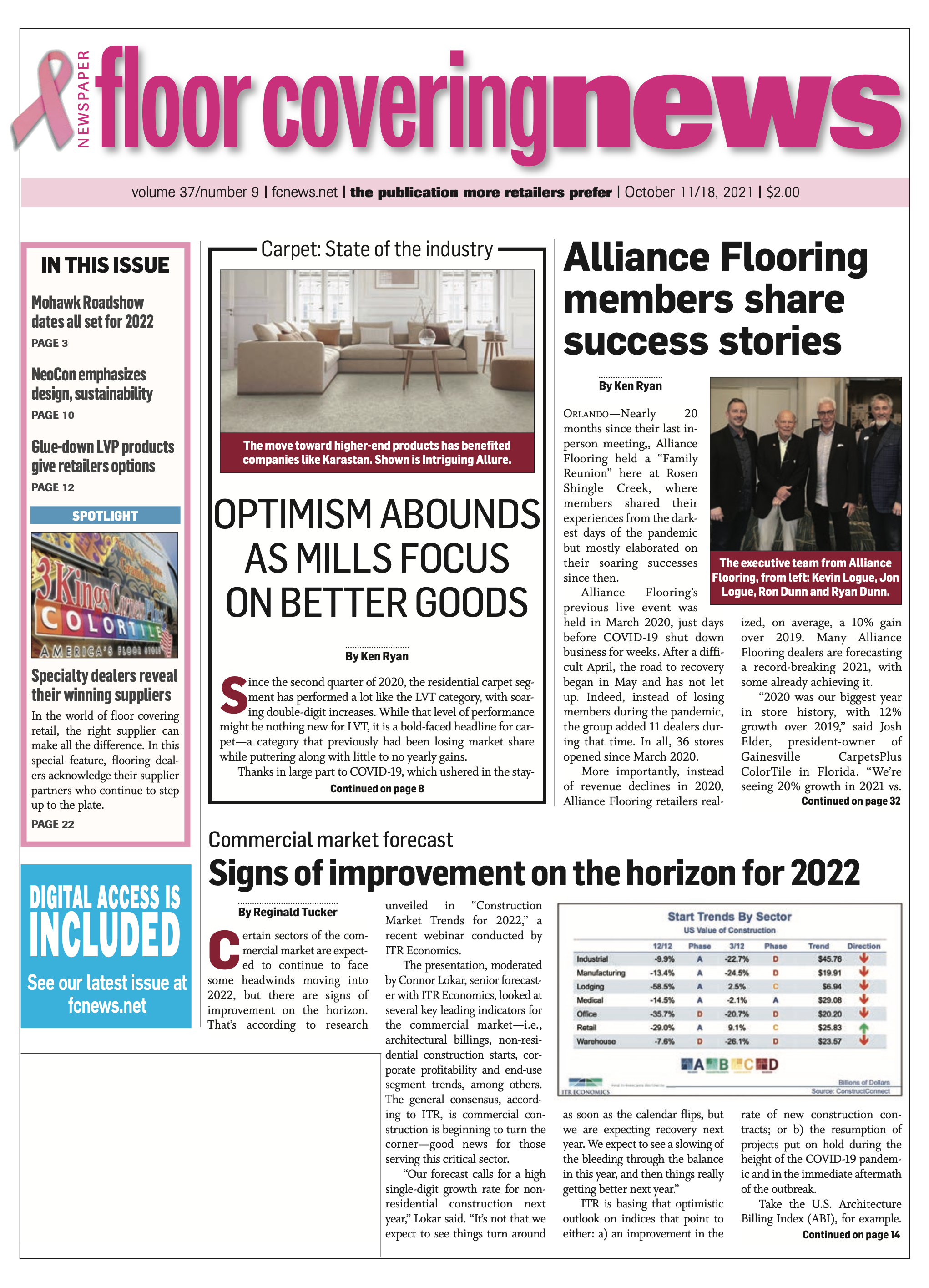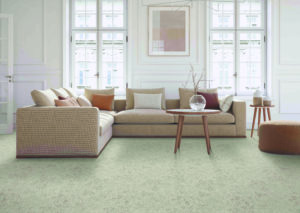
By Ken Ryan Since the second quarter of 2020, the residential carpet segment has performed a lot like the LVT category, with soaring double-digit increases. While that level of performance might be nothing new for LVT, it is a bold-faced headline for carpet—a category that previously had been losing market share while puttering along with little to no yearly gains.
Thanks in large part to COVID-19, which ushered in the at-home/work-at-home environment, carpet has been on the comeback trail with second-quarter 2021 residential sales up 54% over the same period last year, according to industry estimates. To be fair, Q2 2020 was abysmal for carpet amidst the dark days of the pandemic. Since that low-water mark, residential carpet’s sales have surged; year to date, residential is up 36% over the prior-year period, according to industry figures, making it four consecutive quarters of growth—gains not seen since before the Great Recession.
As much as any flooring segment, carpet’s fortunes are tied to housing. And while not all statistics point up for housing, two stats that have been are single- and multi-family starts. Single-family housing starts in August were at a seasonally adjusted annual rate of 1.6 million, the U.S. Census Bureau and the U.S. Department of Housing and Urban Development jointly announced. That’s 3.9% above the revised July estimate of 1.54 million and 17.4% above the August 2020 rate of 1.376 million. Multi-family housing starts, meanwhile, increased by 20.6% for August to a 539,000-unit annual rate, the strongest rate for multi-family starts since January 2020.
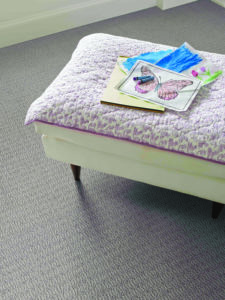
“All of these elements are lined up to help [carpet] be on such a positive trend,” said Curt Hutchins, president of Mohawk’s residential carpet business. “The industry has had a very positive upward trajectory since the second quarter of 2020. COVID-19 kept people in their houses and got them to do things they were putting off. I think the reality of living in your home every day and working at your home played a significant factor as well.”
During the pandemic, discretionary funds that typically would be earmarked for travel and entertainment were redirected toward residential home improvements, and carpet received some of that spend. “More time spent at home meant a greater desire to create a space that allowed for multiple individuals to work from home, learn from home and, more importantly, feel comfortable at home,” said Christine Zampaglione, senior marketing director for Stanton. “The need for sound absorption is also at an all-time high, and carpet definitely helps to mitigate sound from room to room.”
With carpet enjoying the rarified air of double-digit increases, the question many have pondered is: can it continue long-term or at least beyond COVID-19? One thing to remember, executives note, is that today’s carpet is far superior to the products marketed just five years ago.
“The reality is the mills are making better carpet today with performance features that make it a viable option throughout the household,” said Joe Young, soft surface category manager for Engineered Floors. “Solution dyed alleviates the age-old fear of carpet staining, fading or bleaching over short periods of time. “Solution-dyed carpets also provide more blended multicolors that smoothly transition visually from hard surface to soft surface. These performance and aesthetic enhancements only add to the comfort underfoot that people have always loved about carpet.”
Some observers expect carpet volume to stay at least even with current levels into 2022. “As the total flooring market grows, we still think hard surface will grow faster than soft but we think the level we are at for carpet is a pretty good level,” Mohawk’s Hutchins said. “We expect to see a drop at retail but a pickup in multi-family. I don’t see any major thing to change that. Foot traffic is still amazing. It won’t stay this way forever, however. Therefore, it is incumbent on us to keep our new products innovative and on top of fashion trends, as there has been a significant uptick in higher-end carpet.”
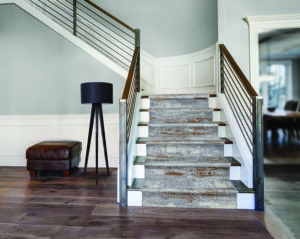
Indeed, where carpet has fared well is at the higher end, with wholesale prices starting at $15 and up. Studies have shown that homeowners are no longer purchasing carpet for their entire homes; it is mostly on a room-by-room basis. As such, they are willing to pay more for it. The Dixie Group’s primary fiber, for example, is nylon 6,6, with an average price point that is about three times the industry average, according to T.M. Nuckols, president of TDG’s residential division. “We design and create products that can command that premium, and the durability of nylon 6,6 is a big part of that equation,” he explained.
Higher prices have also been aided by the multi-family segment, which artificially improved the net selling price of carpet as renters stayed in their apartments longer during COVID-19, resulting in fewer turns. The result was that mills sold goods with higher average selling prices as opposed to the lower-end carpet that normally goes into multi-family units.
The encouraging takeaway for mills and their retail partners is consumers are willing to give carpet a second chance after years of opting for hard surfaces. “As an industry we’re excited about the category from a long-term perspective,” said Brad Christensen, director of soft surface category management, Shaw Residential. “There is a lot of optimism in the category right now and everyone is enjoying the lift and the goodness. The more people talk about soft surface, the more first-time buyers are realizing there are things that can enhance their lifestyles.”
Forward momentum
Rising costs in raw materials, logistics and labor have led to multiple price increases in carpet as well as other categories. That trend is expected to continue. However, executives like Carole Shealy, director of marketing and product development for Tarkett, noted that while carpet costs have gone up, they have not gone up as much as other product categories. As such, “Carpet will continue to be an excellent value for consumers,” she said.
Shaw’s Christensen said he is more concerned with the disruption that the price increases have created for his retail customers and the end user. “All consumer products are being affected by this macro inflationary period. A beautiful product combined with a well-told and simple performance message will win the day, even in a period of rising costs. Studies show that the post-pandemic consumer prizes durability and longevity of investment to a much higher degree than before, followed by factors like cleanability.”
Innovative offerings
Mohawk is among several top mills making significant investments in manufacturing capability that support the loops and fashion products that are so popular today. In particular, Modern View and Enchanting Flair, which is a Karastan SmartStrand Silk, and Karastan Kashmere, which features a medallion pattern, have gained significant traction in 2021.
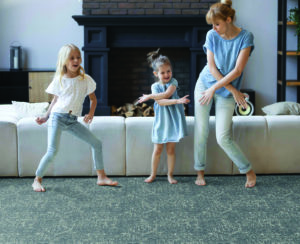
Tarkett has five new product offerings featuring upscale designs, including Papyrus’ textural woven style, Presidio’s plain woven linen look and Somerset’s art-deco layered diamonds. “Our new designs bring dimension and attention to any room,” Tarkett’s Shealy said.
For Stanton, three new styles of the Rock Fusion collection were recently introduced. The new styles are fashion-forward choices that add designer look to any space, the company said.
Shaw said it hopes to separate itself from the plethora of industry pet messaging products with its pet-friendly innovations that include Shaw’s R2X stain and soil treatment, ColorGuard fade-resistant technology and LifeGuard spill-proof backing.
New from DW Select, Engineered Floors’ residential brand, is Coastal Escape. This small-scale artistic pattern complements contemporary or traditional styling with a subtle striated color palette.

